Dry Eye Treatment Recommender
Your Dry Eye Treatment Plan
Answer these questions to get personalized recommendations based on the latest clinical guidelines.
Your Personalized Treatment Plan
When your eyes feel gritty, burn after staring at a screen, or blur when you’re trying to read, it’s not just fatigue. It’s dry eye disease - and it’s more common than most people realize. About 1 in 6 adults in the U.S. has it. For many, it’s not a one-time annoyance. It’s a daily battle, especially if you’re on medications that dry out your eyes - like antihistamines, antidepressants, or blood pressure pills. The good news? You don’t have to just live with it. Lubricants and humidifiers are two of the most effective, science-backed tools to manage it - and they’re often the first line of defense.
What’s Really Happening When Your Eyes Feel Dry?
Your tears aren’t just water. They’re a three-layer sandwich: oil on the outside to lock in moisture, water in the middle to hydrate, and mucus on the inside to spread it evenly. When any layer breaks down, your eyes dry out. Most cases - about 86% - are evaporative dry eye, meaning the oil layer is missing or too thin. That’s why just adding water (like plain saline drops) often doesn’t help long-term. You need to fix the leak.Lubricants: Not All Eye Drops Are Created Equal
Over-the-counter artificial tears are the starting point for almost everyone. But choosing the wrong one can make things worse. Low-viscosity drops like Refresh Tears or Systane Ultra give quick relief but wear off in an hour. If you’re using them six times a day and still burning, you need something thicker. High-viscosity gels like Refresh Celluvisc or GenTeal Gel stay on longer - up to 6 hours - but they blur your vision. That’s why most people use them at night. If you need daytime relief without blur, look for drops with sodium hyaluronate (0.1-0.4%). These stick to the eye’s surface like a protective film and don’t cloud your sight. But if your dry eye is caused by inflammation - which it often is - OTC drops won’t fix the root problem. That’s where prescription drops come in.Restasis (Cyclosporine) - The Long Game
Restasis was the first real breakthrough for chronic dry eye. It’s not a lubricant. It’s an immunosuppressant. It works by calming down the inflammation that kills your tear glands. But here’s the catch: it takes 3 to 6 months to work. If you stop using it after a week because your eyes still burn, you’ll never see the benefit. And yes, that burning? It’s real. About 68% of users report it. That’s why many refrigerate the bottle - the cold helps. Generic cyclosporine now costs $150-$250 a month, down from $500-$600. Still expensive, but more doable.Xiidra (Lifitegrast) - Faster, But Irritating
Xiidra targets a different part of the inflammation pathway. It works faster - some users feel better in 2 weeks. But it comes with a trade-off: 25% of people get stinging or discomfort right after putting it in. That’s why adherence drops off fast. If you can push through the first two weeks, the relief lasts.Miebo - The New Player That Works Immediately
Approved in 2023, Miebo is different. It doesn’t increase tear production. It doesn’t fight inflammation. It forms a protective oil barrier over your eye, like a shield against air. It’s made of perfluorohexyloctane - a synthetic oil that doesn’t mix with water. That means it doesn’t wash away. Users report immediate relief. In clinical trials, it improved dryness symptoms 1.5 times more than placebo in just 15 days. The downside? It costs $650 a month, and most insurance plans won’t cover it unless you’ve tried cheaper options first. But if your eyes feel like sandpaper by noon, this might be the missing piece.Humidifiers: The Silent Hero
You can use the best eye drops in the world, but if you’re sleeping in a dry room or sitting under an AC vent all day, you’re fighting a losing battle. Humidifiers add moisture to the air - simple, cheap, and backed by real data. A 2024 survey of 342 dry eye patients found that 72% saw better nighttime symptoms when they used a humidifier set between 40% and 60% humidity. That’s not magic. Dry air pulls moisture from your eyes. A humidifier slows that down. You don’t need a fancy one. A basic cool-mist humidifier next to your bed costs under $50. Run it overnight. Clean it weekly. Mold in a humidifier is worse than dry air. For people who work in offices with forced-air heating or spend hours in front of screens, a desktop humidifier makes a noticeable difference. One user on Reddit said, “I used to wake up with my eyes glued shut. After adding a humidifier, I stopped needing drops before 10 a.m.”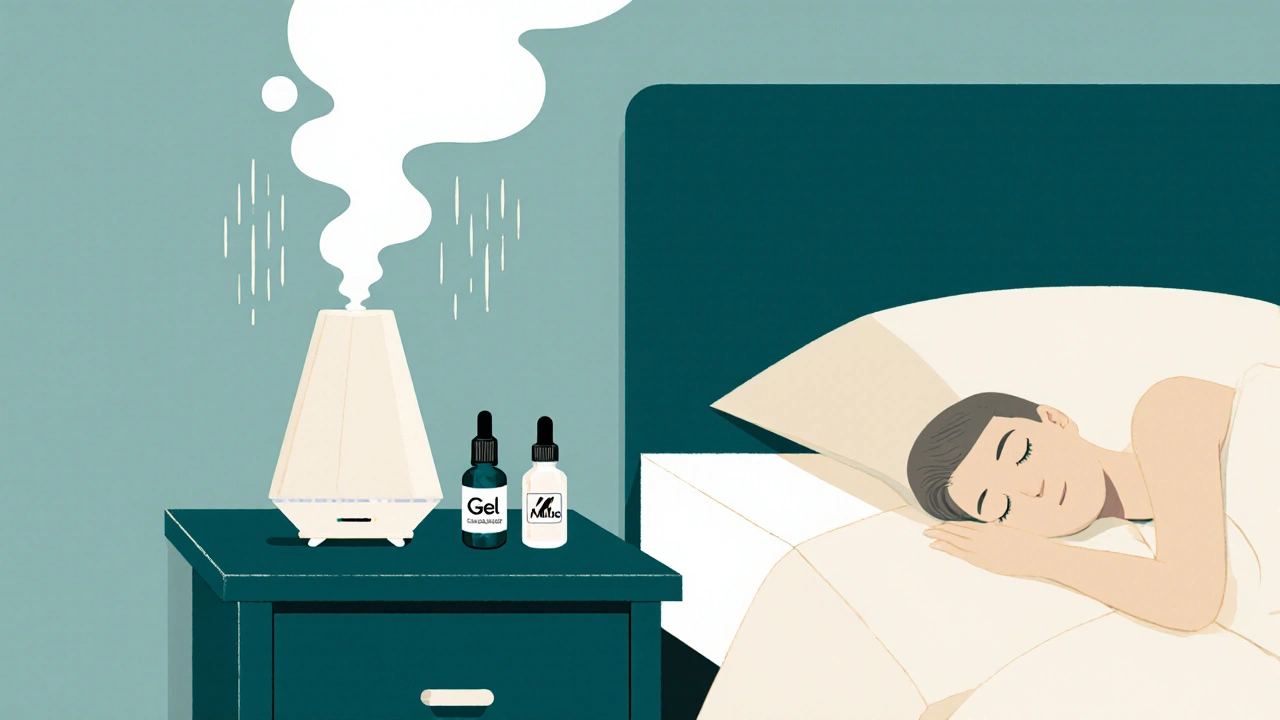
Putting It All Together: A Realistic Plan
Here’s how to start, based on your symptoms:- Mild dryness (occasional grit, redness): Use low-viscosity artificial tears 2-4 times a day. Add a humidifier in your bedroom. Avoid direct airflow from fans or heaters.
- Moderate to severe (burning, blurred vision, light sensitivity): Switch to high-viscosity drops at night. Use a humidifier. Talk to your eye doctor about prescription options. If inflammation is suspected, Restasis or Xiidra might help - but give them time.
- Evaporative dry eye (oil layer failure): Miebo is the most targeted option. If cost is an issue, try over-the-counter lipid-based drops like Systane Balance or Soothe XP. They’re cheaper and work on the same principle.
What Doesn’t Work (And Why)
- Drinking more water: Hydration helps your body, but it doesn’t fix tear film structure. You can drink a gallon a day and still have dry eyes.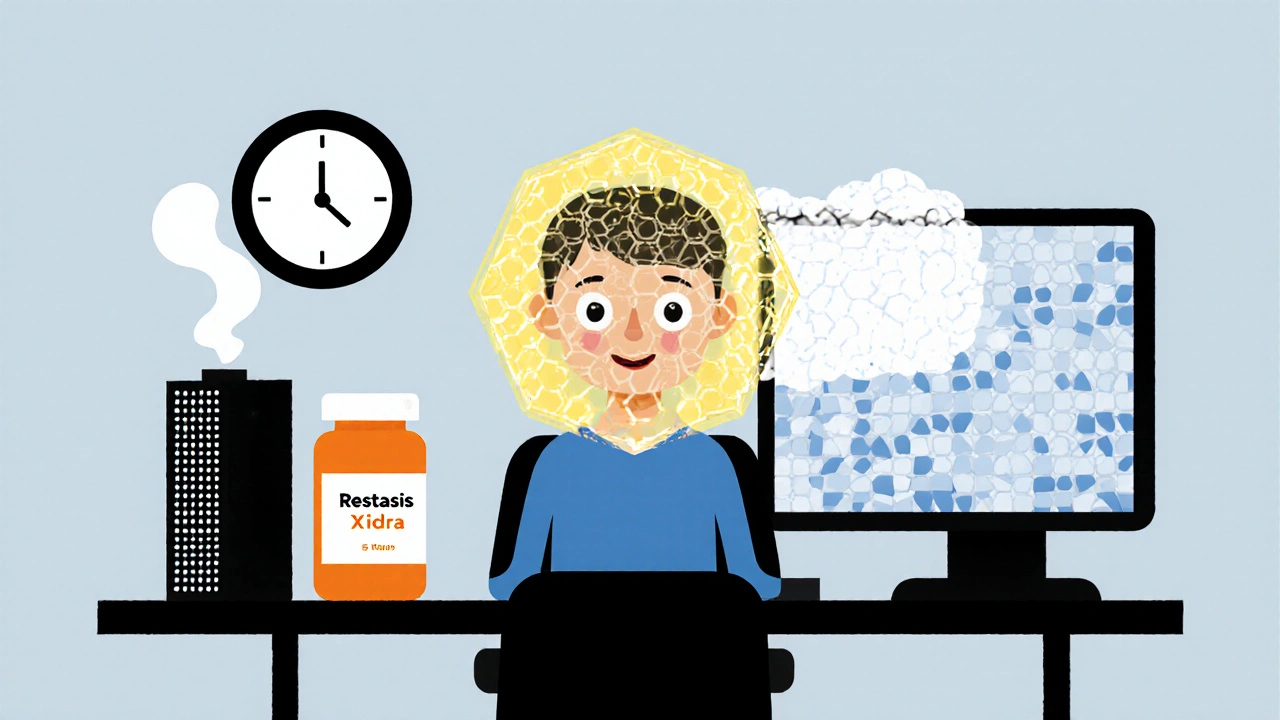
Adherence Is the Biggest Hurdle
Studies show only 52% of people stick with Restasis after six months. Why? The burning. The cost. The delay in results. But if you skip doses, you get no benefit. Here’s how to stay on track:- Set phone alarms for morning and night.
- Keep drops next to your toothbrush - that’s your trigger.
- Refrigerate drops to reduce irritation.
- Use punctal plugs (tiny silicone inserts in your tear ducts) to keep drops on your eye longer. It’s a quick in-office procedure.
What’s Next in Dry Eye Treatment?
New drugs are coming fast. Reproxalap, a topical anti-inflammatory, showed strong results in early 2024 for reducing redness and improving tear production. Tyrvaya, a nasal spray that stimulates tear production through nerves, is gaining traction. And TearLab’s osmolarity test - which measures salt levels in your tears - helps doctors pick the right treatment for you. Personalized care is the future. But for now, the foundation hasn’t changed: lubricants to protect, humidifiers to support, and patience to let inflammation heal. It’s not glamorous. But it works.Can I use artificial tears every day?
Yes, you can use artificial tears daily - even multiple times a day. But if you’re using them more than four times a day, switch to preservative-free single-dose vials. Preservatives in multi-use bottles can irritate your eyes over time. For long-term use, it’s safer and more effective.
Do humidifiers really help with dry eyes?
Yes. Studies and patient reports consistently show that maintaining indoor humidity between 40% and 60% reduces tear evaporation. This is especially helpful at night when your eyes are closed but still losing moisture. A simple cool-mist humidifier next to your bed can cut down your daytime drop use by half.
Why does Restasis burn when I put it in?
Restasis contains cyclosporine, which can irritate the surface of your eye, especially when inflammation is high. The burning usually lessens after a few weeks. Refrigerating the bottle before use can reduce the discomfort. If it’s unbearable, talk to your doctor - you might need to try Xiidra or a different approach.
Is Miebo worth the cost?
If you have evaporative dry eye and other treatments haven’t worked, yes. Miebo works immediately by sealing in moisture, unlike drugs that take months. Many users report dramatic relief within days. But if cost is a barrier, try cheaper lipid-based OTC drops first. Insurance often requires trying those before approving Miebo.
Can dry eye damage my vision permanently?
Yes, if left untreated. Chronic dry eye can lead to corneal abrasions, infections, or scarring. That’s why it’s not just about comfort - it’s about protecting your eye surface. Early treatment with lubricants and anti-inflammatories prevents long-term damage.

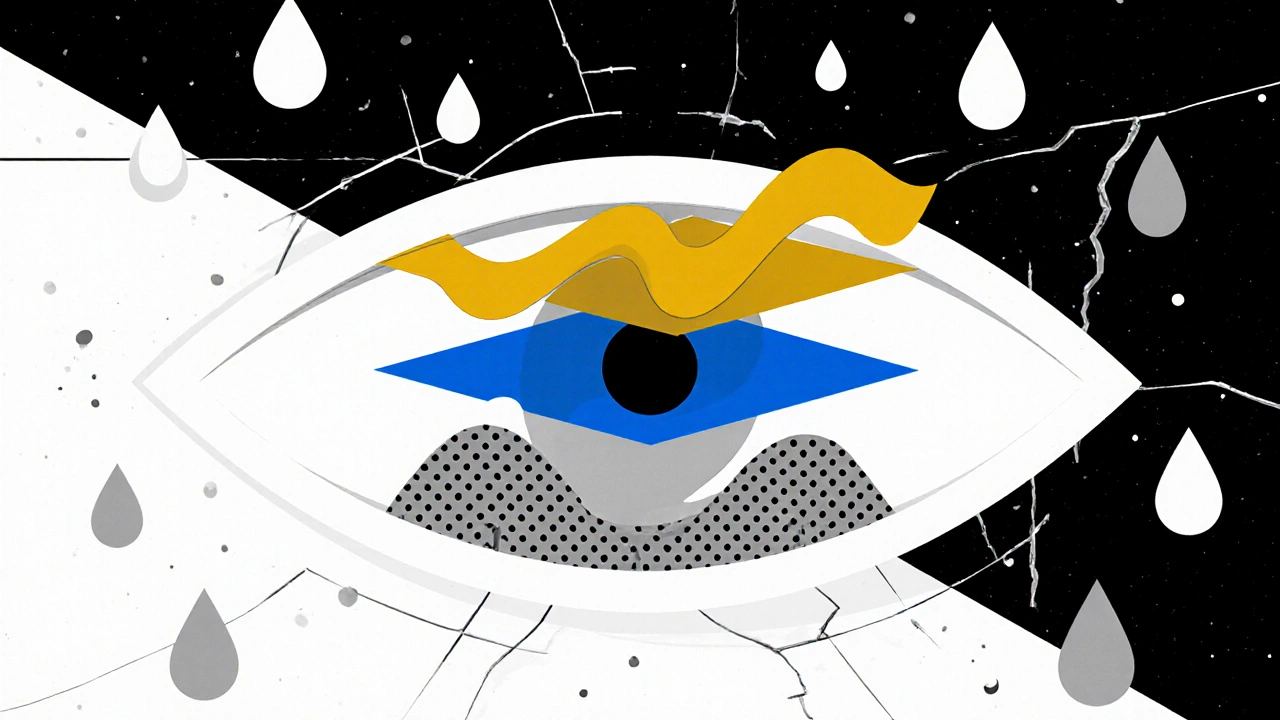

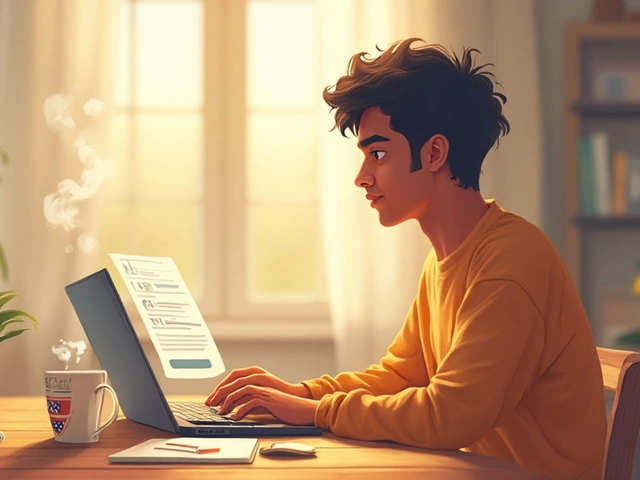

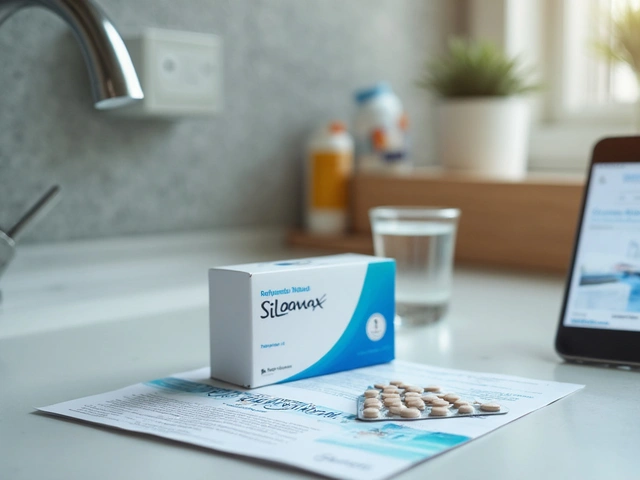

Marshall Washick
November 4, 2025 AT 00:25I’ve been dealing with dry eyes for years, mostly from my antidepressants. I tried everything-drops, warm compresses, even those weird eyelid scrubs. What actually changed things for me was a cheap humidifier next to my bed. I used to wake up with crusty eyes and need drops before coffee. Now? I barely use them until noon. It’s not glamorous, but it works. Seriously, if you’re on meds that dry you out, get a humidifier. It’s the quiet hero no one talks about.
Also, refrigerating Restasis? Genius. The burn is less like a firework and more like a spark. I started doing it after reading this post and it made all the difference.
Emily Barfield
November 5, 2025 AT 11:43It’s fascinating how we’ve reduced a deeply biological, neurologically complex condition-dry eye disease-to a series of consumer products: drops, humidifiers, gels… as if the body is just a machine that needs the right lubricant.
But what if the root isn’t the tear film at all? What if it’s the modern world itself? Screen glare, air conditioning, fluorescent lighting, chronic stress, the collapse of circadian rhythm… we’ve engineered a reality where our eyes are constantly under siege. We treat the symptom because the system won’t let us fix the cause.
Restasis takes months? Of course it does. Healing isn’t a product you can buy off the shelf. It’s a process. And we’ve forgotten how to wait.
Still… I use Miebo. And I’m grateful for it. But I don’t fool myself into thinking it’s a cure. It’s a ceasefire.
Sara Allen
November 5, 2025 AT 21:50Yall know the government is hiding the real cause of dry eye right? Its the 5g towers in the ceiling lights at work. I work in an office and my eyes burn at 10am every day. I tried the humidifier but it did nothing. Then I put aluminum foil on my monitor and the burning stopped. I told my boss and he laughed. Now they’re replacing all the lights with ‘LED health bulbs’-they’re lying. They know its 5g. They dont want you to know. I saw a video on YouTube where a guy in Canada got his eyes tested and the salt levels went down after he uninstalled his smart meter. You think that’s a coincidence? I dont think so.
Also I use Refresh Tears cause its the only one that dont have sodium in it. They put sodium in the drops to make you buy more. Its all connected.
Ryan Tanner
November 6, 2025 AT 00:13YES. YES. YES. 🙌
Humidifier = life changer. I was using drops every hour. Now I use them twice a day. I got the $35 one from Target. Clean it once a week. Done. No drama.
Also, Miebo? I tried it after 6 months of burning eyes. Day 1: felt like someone poured oil on my eyeballs. Day 3: I cried because I could read my phone without squinting. Worth every penny. Insurance denied it? Appeal. Fight. Your eyes matter.
And yes, refrigerate Restasis. Cold = less burn. I keep mine next to my butter. 🧈👁️
Melissa Delong
November 6, 2025 AT 04:22I find it alarming how easily people accept these pharmaceutical solutions without questioning the motives behind them. The eye care industry makes billions from chronic dry eye. They promote drops, then prescribe more drops, then push expensive new ones like Miebo. Why not ask why so many people are developing this now? Is it screen time? Or is it something in our food? Our water? The chemicals in our homes? We are being conditioned to treat symptoms, not seek truth. I have not used a single drop in six months. I drink distilled water, avoid all processed foods, and sleep with my window open. My eyes are better. The system doesn’t want you to know this.
Jessica Adelle
November 6, 2025 AT 14:48It is both deplorable and profoundly irresponsible that the medical establishment continues to normalize the use of immunosuppressive agents for a condition that, in many cases, stems from environmental neglect and personal negligence. The fact that patients are being encouraged to rely on $650-per-month topical therapies while ignoring basic environmental hygiene-such as maintaining adequate indoor humidity-is a moral failure. Furthermore, the casual recommendation of preservative-free single-dose vials, while technically correct, perpetuates a culture of disposability and waste. One must ask: are we treating patients-or merely selling convenience? This is not healthcare. This is consumerism disguised as medicine.
Sai Ahmed
November 7, 2025 AT 11:26Whatever. I don't care about all this science stuff. I just use saline from the pharmacy. It's cheap. I blink more. Done. Why are people making this so complicated? You just need to stop looking at phones so much. Everyone is addicted. My grandma never had dry eyes. She didn't even have a phone. Maybe the problem is not your eyes. Maybe it's you.
Albert Schueller
November 7, 2025 AT 23:42Let me tell you something about these 'new' treatments. Miebo? Approved in 2023? That's the same year the FDA approved 14 new eye drugs. Coincidence? I think not. Big Pharma is running out of blockbuster drugs for cholesterol and blood pressure, so now they're targeting dry eye. Why? Because it's chronic. Because people will pay. Because they can make you dependent. Restasis? It's just cyclosporine-used in transplant patients. You think they want your eyes to heal? No. They want you to keep buying. And don't get me started on humidifiers-cheap, effective, no patent. That's why you don't see ads for them. The system doesn't profit from air moisture. It profits from your tears.